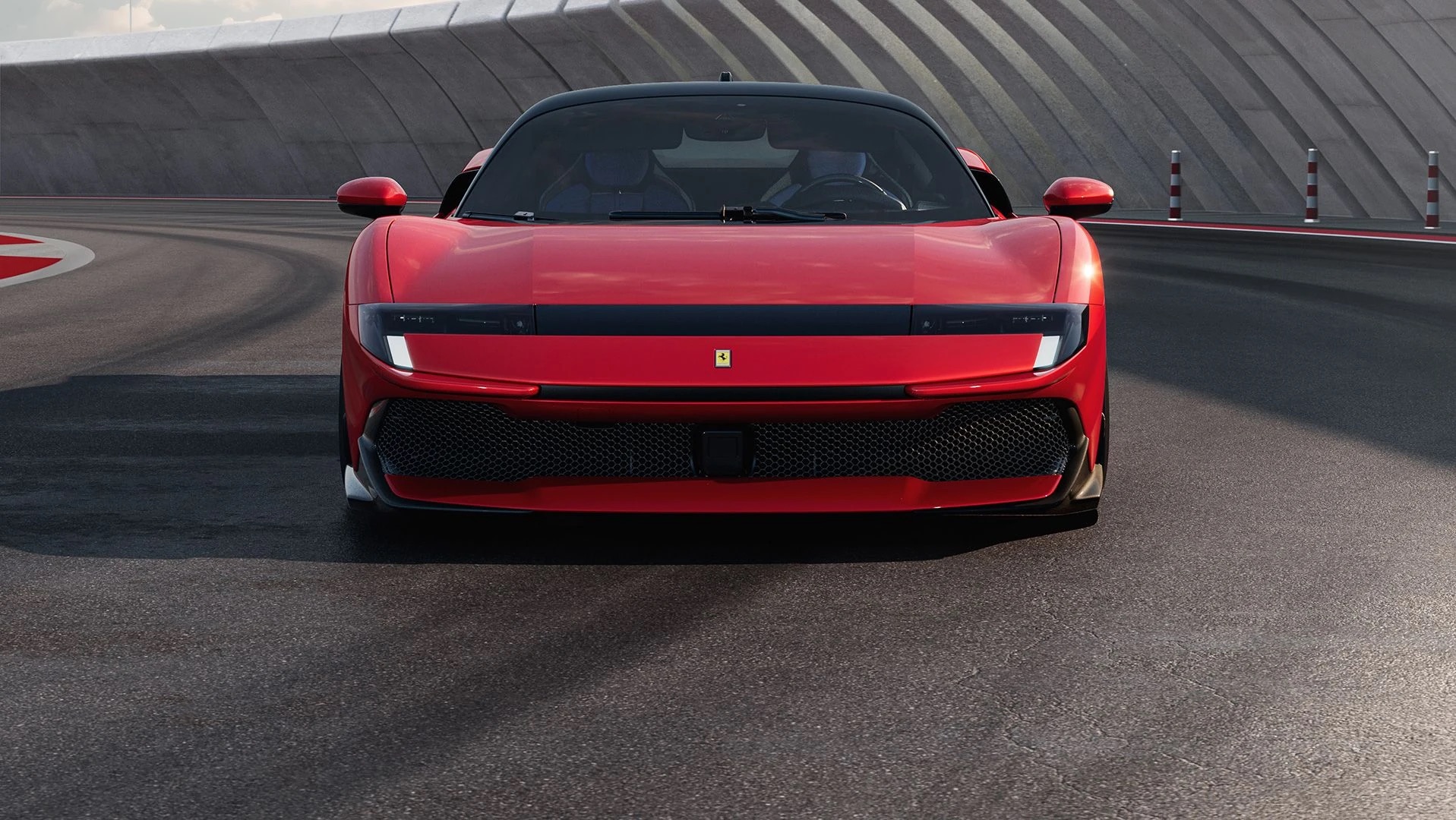
When Ferrari brings back a name as storied as Testarossa, expectations are heavy. The original helped define the supercar era of the 1980s, with its wide body, side strakes, and wall-poster presence. The new Ferrari 849 Testarossa is something entirely different. It is not about nostalgia or retro styling. Instead, it uses that famous name to signal a new chapter in Maranello’s history, one where power, precision, and electrification meet in a single machine.
At its core, the 849 Testarossa follows a format Ferrari knows well: a mid-mounted V8, rear-wheel-biased handling, and a focus on driver connection. But the details show how far the company has pushed the formula. The 4.0-liter twin-turbo V8, part of Ferrari’s award-winning F154 engine family, has been thoroughly overhauled. Lighter internals, new cylinder heads, and a set of the largest turbos ever fitted to a road-going Ferrari push output to 830 cv (819 hp) and 842 Nm of torque.
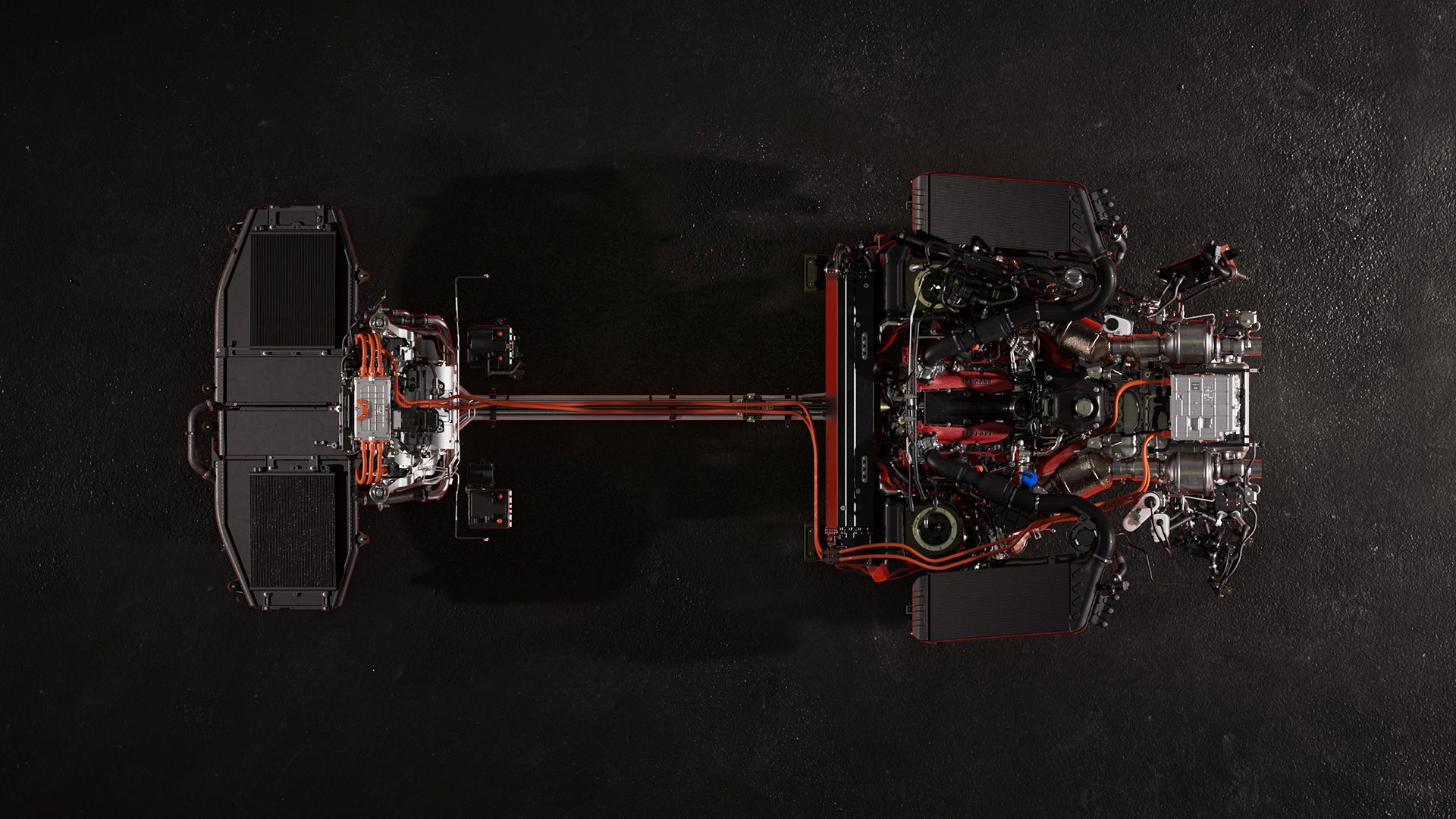
That is only part of the story. A trio of electric motors, two on the front axle and one sandwiched between the engine and gearbox, adds another 220 cv for a combined 1050 cv. Power is sent through an 8-speed dual-clutch transmission, and acceleration is predictably savage. Ferrari quotes a 0-100 km/h time of under 2.3 seconds and a top speed beyond 330 km/h, numbers that comfortably place the 849 at the sharp end of the performance spectrum.
Despite this firepower, the hybrid side of the car is not an afterthought. A 7.45 kWh battery offers around 25 km of electric-only range, enough for silent city driving before the V8 wakes up. Four driving modes (eDrive, Hybrid, Performance, and Qualify) let the driver decide how much of that hybrid system to call upon.
Ferrari is careful about design. Under the guidance of Flavio Manzoni, the Styling Centre has created something that is neither a throwback nor a dramatic departure. The 849 Testarossa’s shape is functional, its surfaces sculpted for aerodynamic benefit as much as for visual drama. Vertical side intakes feed the intercoolers while contributing to the car’s distinct profile. The twin-tail rear, inspired by the 512 S racers of the 1970s, channels airflow to help generate 415 kg of downforce at 250 km/h, a 25 kg gain over the SF90 Stradale.
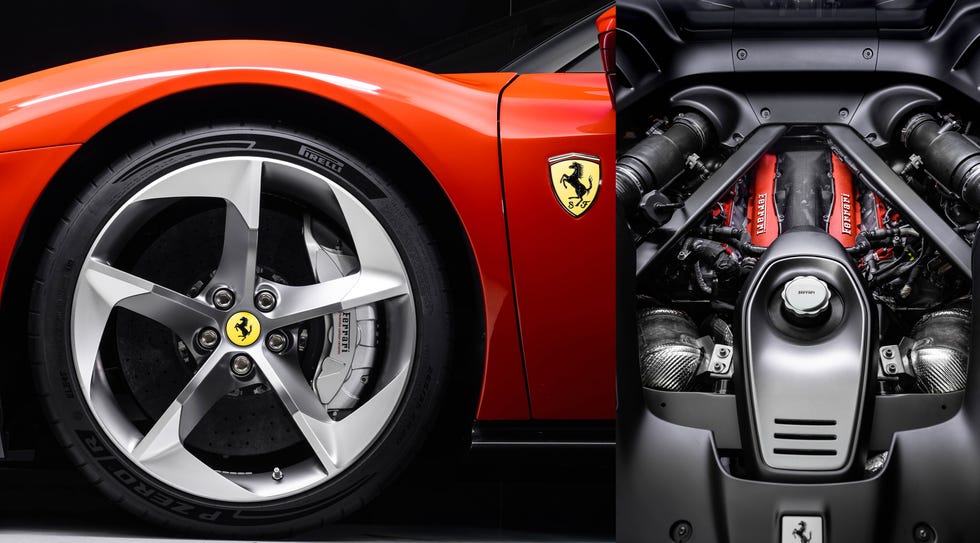
Whether you love or question its appearance is up to you. What is clear is that the form serves the function. Aerodynamic efficiency is up, cooling performance improves by 15 percent, and a new active rear spoiler can switch between low-drag and high-downforce modes in less than a second.
The cabin feels unmistakably Ferrari, with a focus on the driver but no shortage of sophistication. The dashboard has been redesigned for better ergonomics, and physical buttons return to the steering wheel as a response to criticism of the SF90’s touch-sensitive setup. Digital instruments dominate the driver’s view, while a passenger display provides performance readouts. The gear selector sits in a polished metal gate that nods to classic Ferrari manuals, even though the transmission itself is a paddle-shifted dual-clutch.
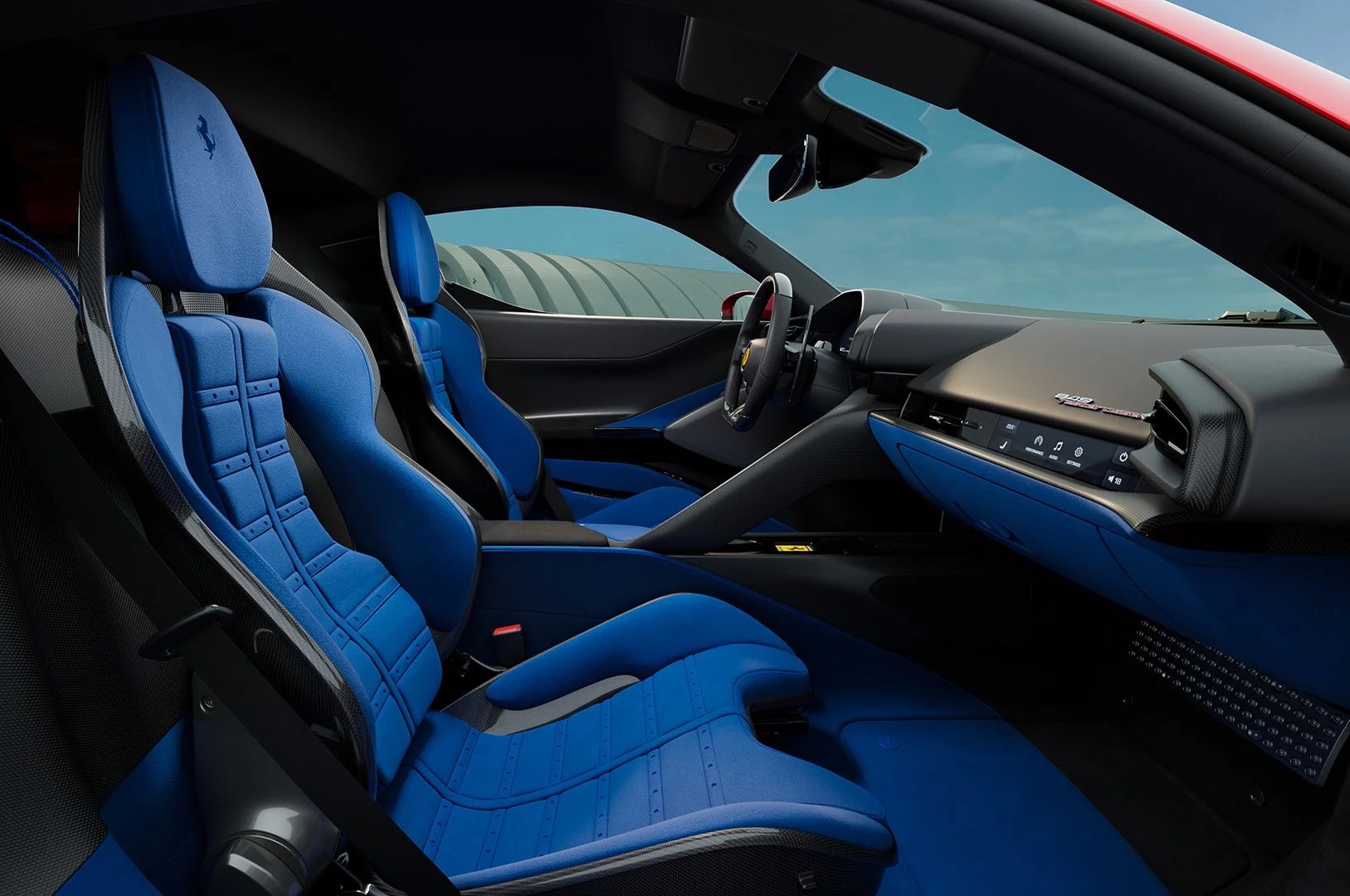
Technology is seamlessly integrated rather than overwhelming. The FIVE (Ferrari Integrated Vehicle Estimator) system predicts driver inputs and road conditions, adjusting traction control and differential settings in real time. The new ABS Evo braking system enhances precision and consistency, and regenerative braking has been refined to feel more natural underfoot.
On paper, the 849 Testarossa is brutally fast. But the engineering work goes deeper than acceleration figures. Suspension geometry has been revised to improve response and mechanical grip. A new brake-by-wire system shortens stopping distances, while weight-saving measures keep the car at the same mass as the SF90 despite its added complexity. The result is a supercar that feels as agile and alive as it is powerful.
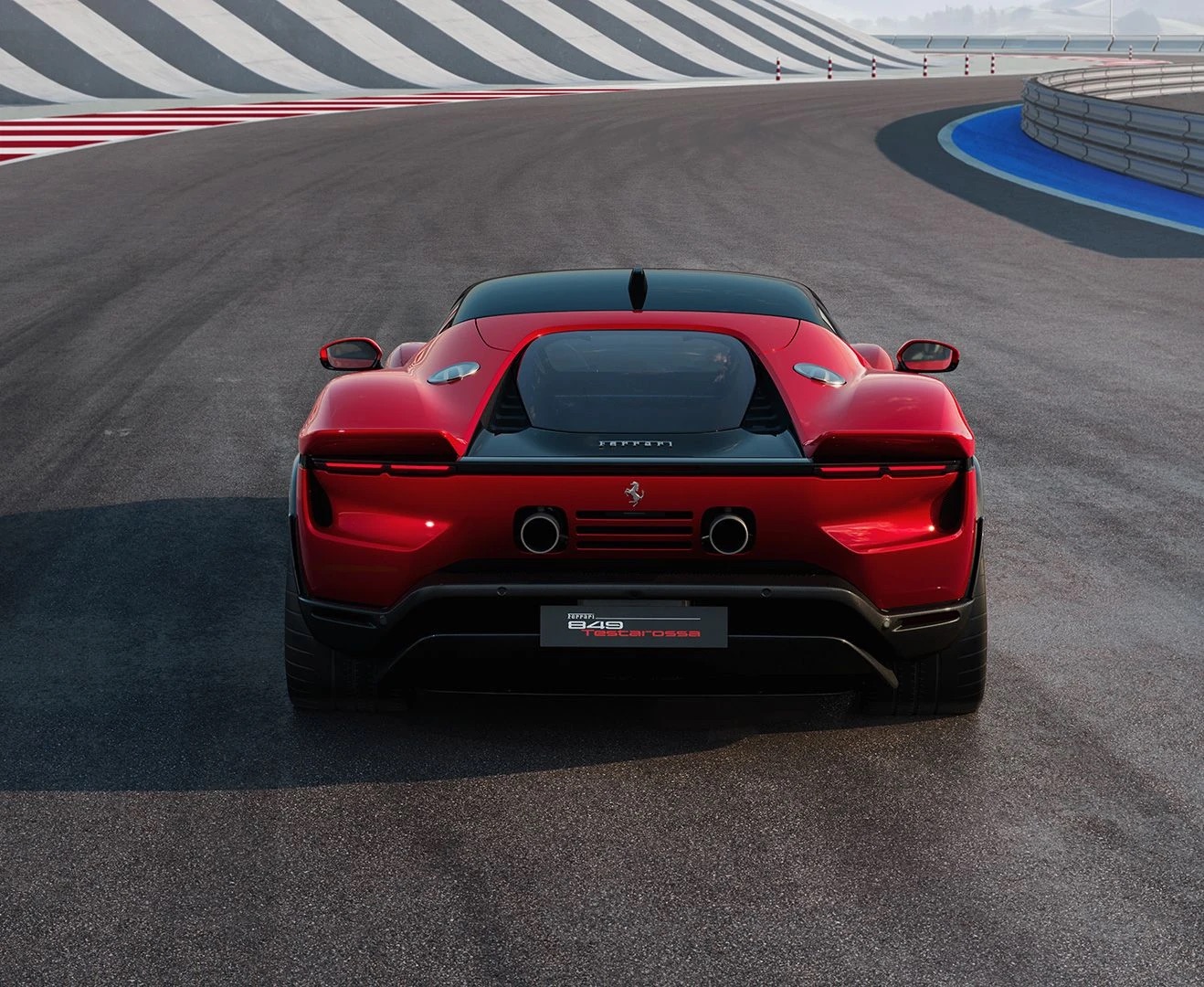
For those chasing ultimate performance, the Assetto Fiorano package goes further. It trims about 30 kg through carbon fiber components and lightweight seats, sharpens the suspension, and adds aerodynamic upgrades aimed at track driving. A Spider version with a retractable hardtop brings open-air excitement with only a small weight penalty.
The name Testarossa was originally inspired by the red cam covers of Ferrari’s most powerful engines. Today, it represents something broader: a link between the company’s racing heritage and its future ambitions. The Ferrari 849 Testarossa is not just a replacement for the SF90. It is a demonstration of what Ferrari believes the modern supercar should be: powerful, intelligent, efficient, and deeply engaging.
It is also proof that even as the automotive world shifts toward electrification, Ferrari’s core values have not changed. This car still places the driver at the center of everything. It just does so with more power, more precision, and more technology than ever before.